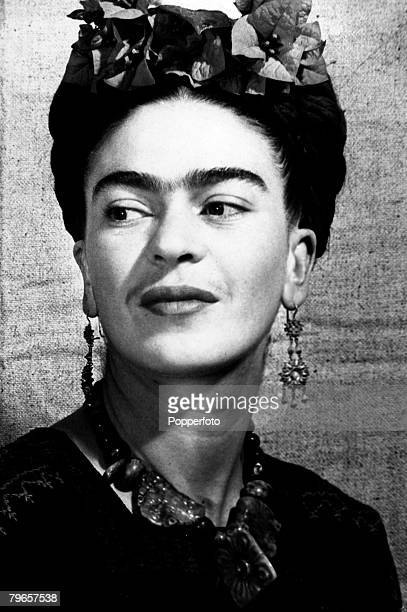In 1925, Frida Kahlo was on her way home from school in Mexico City when the bus she was riding collided with a streetcar. She suffered near-fatal injuries and her disability became a major theme in her paintings. Over the course of her life, she would establish herself as the creator and muse behind extraordinary pieces of art. Iseult Gillespie dives into the life and work of Frida Kahlo.
.
Watch:
Glossary
- fatal – causing death
- pelvis – the lower part of the torso located between the abdomen and the legs
- easel – a stand or frame for supporting at an angle an artist’s canvas
- formidable – causing one to feel fear or respect for something or someone because that thing or person is large, powerful, difficult
- to rupture – to break
- affinity – a feeling of closeness and understanding that someone has for another person because of their similar ideas, interests
- indigenous – originating in and characteristic of a particular region
- to undulate – to display a smooth rising-and-falling or side-to-side alternation of movement
- billowing – characterized by great swelling waves or surges
- back brace – a support that steadies or strengthens the back
- tempestuous – turbulent, stormy
- infidelity – adultery
- anguish – suffering
- to splinter – to break into small, sharp pieces
- to proliferate – to increase rapidly in numbers
Replace the words in bold with their synonyms (provided in Glossary)
In Frida Kahlo’s early work, “Self Portrait with Velvet Dress,” the focus is on her strong brows, facial hair, long neck and (1) intimidating stare.
“The Broken Column” uses symbolism, religious imagery, and a (2) cracked landscape to reveal her physical and mental state.
The double self-portrait “The Two Fridas” speaks to the (4) pain of loss and a (5) shattered sense of self.
With her imagery of giant floating flowers, (3) wavy landscapes, transplanted body parts and billowing clouds of demons, Kahlo has often been associated with Surrealism.
Although her image has (6) multiplied, Kahlo’s body of work reminds us that there are no simple truths about the life, work and legacy of the woman behind the icon.
ANSWERS: 1. formidable; 2. ruptured; 3. undulating; 4. anguish; 5. splintered; 6. proliferated
Practice Makes Perfect
WORD FORMATION: Change the word in CAPITALS to fill in the blanks.
Frida Kahlo contracted polio at age six. She was confined to her bed for nine months—an (1. ETERNAL) ……… for an active six-year-old. To help compensate for her (2. LONELY) , her father gave her books and taught her how to take and develop photographs. In 1925 she had a near-fatal accident and was (3. BED) for months. Frida started painting to amuse herself during her (4. CONVALESCE). In 1927, once she was up and around, she sought the professional opinion of the celebrated artist Diego Rivera. As (5. RESIST) as he was ugly, Rivera was described by Frida as ‘a boy frog standing on his hind legs.’” They got married in 1929. During the first years of their marriage Frida (6. HAPPY) performed the role of (7. EXAMPLE) wife. While Frida and Diego were still relatively happy, Russian Marxist revolutionary Leon Trotsky and his wife arrived in Mexico City to live with them, having been expelled from the Soviet Union. Trotsky and Frida had a fling, sending Madame Trotsky into an (8. UNDERSTAND) depression. Diego also had extra(9. MARRY) affairs, the last one with Frida’s sister, Cristina. In 1939, Frida and Diego Rivera were divorced. Then they got back together and remarried in 1940. At that time Frida painted most of her (10. PIECE).
ANSWERS: 1. eternity; 2. loneliness; 3. bedridden; 4. convalescence; 5. irresistible; 6. happily; 7. exemplary; 8. understandable; 9. marital; 10. masterpieces
Discuss:
- Are you a fan of Frida Kahlo’s work?
- Who’s your favorite painter?
- What kind of art do you like?
- Do you have any paintings at home? Would you like to have one/more?
- Do you like modern art?
- Do you ever think a lot of art is not really art?
- Do you have any artistic talents?
Explore it more to create your own teaching-learning experience!
The Artist Who Scours Instagram and the Internet.
As evidenced by Gina Beavers’s emphatically physical paintings, new technologies make the world’s oldest medium stronger.
Read:
newyorker.com/the artist_who_scours_instagram_and_the_internet
(1457)






